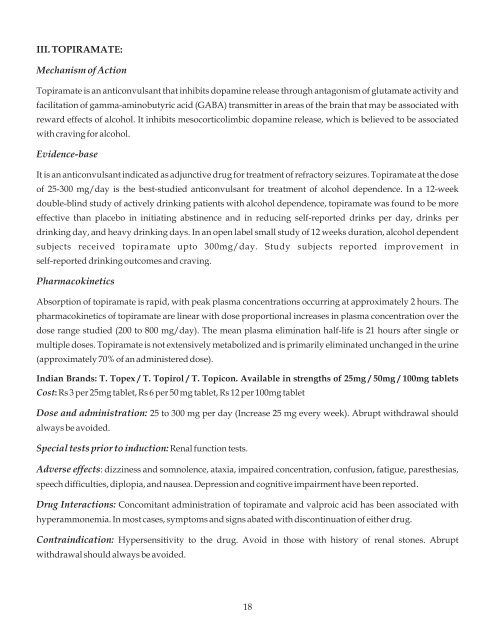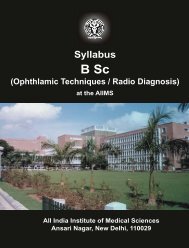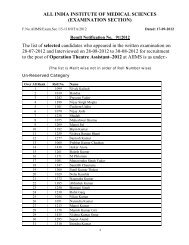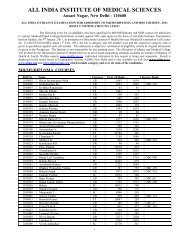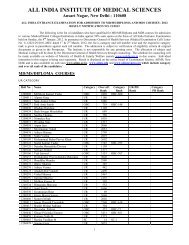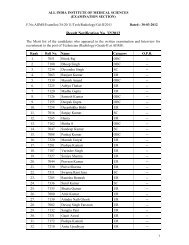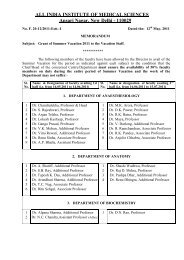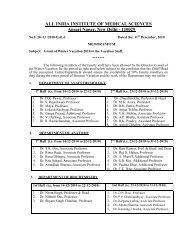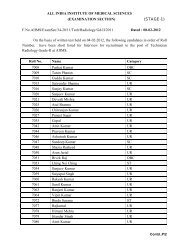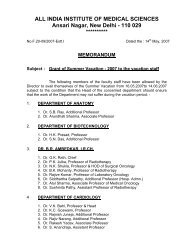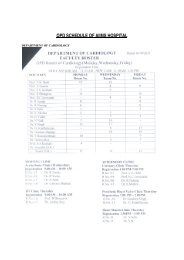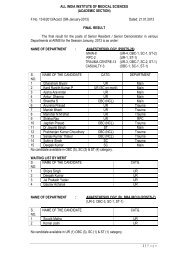Manual for long-term pharmacotherapy - All India Institute of Medical ...
Manual for long-term pharmacotherapy - All India Institute of Medical ...
Manual for long-term pharmacotherapy - All India Institute of Medical ...
You also want an ePaper? Increase the reach of your titles
YUMPU automatically turns print PDFs into web optimized ePapers that Google loves.
Dosage and Administration<br />
Naltrexone is available in 50 mg tablets and the recommended daily dose is 50 mg per day. Initiating naltrexone<br />
maintenance requires that the patient be opiate free. An opiate antagonist like naltrexone can precipitate an acute<br />
withdrawal syndrome in patients who are dependent on or are regular users <strong>of</strong> opioids. So patients should be<br />
detoxified and should be abstinent from short acting opiates (e.g. heroin) <strong>for</strong> about 3 days and from <strong>long</strong>er<br />
acting opiates (e.g. methadone) <strong>for</strong> about 7 days or more as judged by self report, urine toxicology screening<br />
test and Naloxone Challenge test.<br />
Naloxone testing <strong>for</strong> residual dependence (Naloxone Challenge test)<br />
It has been advocated that an intravenous or subcutaneous challenge <strong>of</strong> 0.4-0.8 mg <strong>of</strong> Inj. Naloxone<br />
(if available in the centre) be given prior to the administration <strong>of</strong> naltrexone to test <strong>for</strong> residual opioids so that<br />
withdrawal signs and symptoms are not precipitated. A positive test indicative <strong>of</strong> residual opioids would<br />
consist <strong>of</strong> typical signs and symptoms <strong>of</strong> opiate withdrawal.These include yawning, abdominal cramps,<br />
irritability, anxiety, chills etc. These signs and symptoms <strong>of</strong>ten last only 30-60 minutes and in such a situation<br />
naltrexone should be withheld <strong>for</strong> at least 24 hours.<br />
Intravenous:<br />
Inject 0.2 mg naloxone.<br />
Observe <strong>for</strong> 30 seconds <strong>for</strong> signs or symptoms <strong>of</strong> withdrawal.<br />
If no evidence <strong>of</strong> withdrawal, inject 0.6 mg <strong>of</strong> naloxone.<br />
Observe <strong>for</strong> an additional 20 minutes.<br />
Subcutaneous:<br />
Administer 0.8 mg naloxone.<br />
Observe <strong>for</strong> 20 minutes <strong>for</strong> signs or symptoms <strong>of</strong> withdrawal.<br />
Note: The naloxone challenge test should not be per<strong>for</strong>med in a patient showing clinical signs or symptoms<br />
<strong>of</strong> opioid withdrawal, or in a patient whose urine contains opioids.<br />
Naltrexone Induction<br />
When the required period <strong>of</strong> abstinence from opioids is complete as judged by clinical examination and self<br />
report, urine toxicology screening test (if available), negative naloxone challenge test(if available), naltrexone<br />
can be initiated carefully in the dose <strong>of</strong> 25mg and if no withdrawals occur after 1 hour then another dose <strong>of</strong> 25<br />
mg is given.The recommended dosage subsequently is 50mg/day.<br />
After the first 1-2 weeks, it is usually possible to graduate the patient (50, 75, 100 mg on subsequent days) to<br />
three doses per week (100mg on Mondays and Wednesdays and 150mg on Fridays). It may also be give in the<br />
dosing regimen <strong>of</strong> 100mg every other day or 150 mg every third day. As compliance is <strong>of</strong>ten poor, these flexible<br />
41


